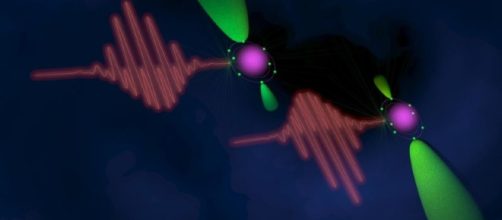A group of scientists have developed a method for manipulating the emission of electrons at the smallest time scale measurement than has ever been attempted before. The researchers used a pair of laser pulses to switch the stream of electrons from on to off and vice versa. For this study, scientists used pointy needles of only a few nanometers wide so that the point at which the electrons are emitted is known with high accuracy. This small time scale measurement also allows them to know the exact time of Electron emission.
Controlling electron emission
To control the small time scale interval of electron emission, scientists used two distinct laser pulses that are fired at the very tip of the tiny metal needles; the lasers are chosen so that the fired photons of one laser contain twice the energy of the other laser.
An electron is emitted when it absorbs two photons from the more energetic laser or four electrons from the least energetic laser. The main idea behind this method is that by combining two distinct laser pulses, the emission of electrons can be controlled at the femtosecond scale, which is a very small time scale.
Just like the double slit experiment
The fine tuning of each of the laser pulses may allow to control whether the physical quantum states amplify each other or whether they interfere with each other, thus cancelling the emission of electrons. Both of these processes lead to the same outcome, much like the Double slit experiment in which a particle can take two different pathways at the same time.
Just like it, the electron can be engaged in two distinct quantum processes at the same time. Any of the two possibilities can then be used to interfere with each other and increase or decrease the emission of electrons at the femtosecond scale.
This innovative method of controlling the emission of electrons advances the possibilities of controlling the generation of X-rays in new ways that could allow the production of X-ray radiation. Up to date X-ray sources are being develop using tiny metal tips as sources of electrons.

